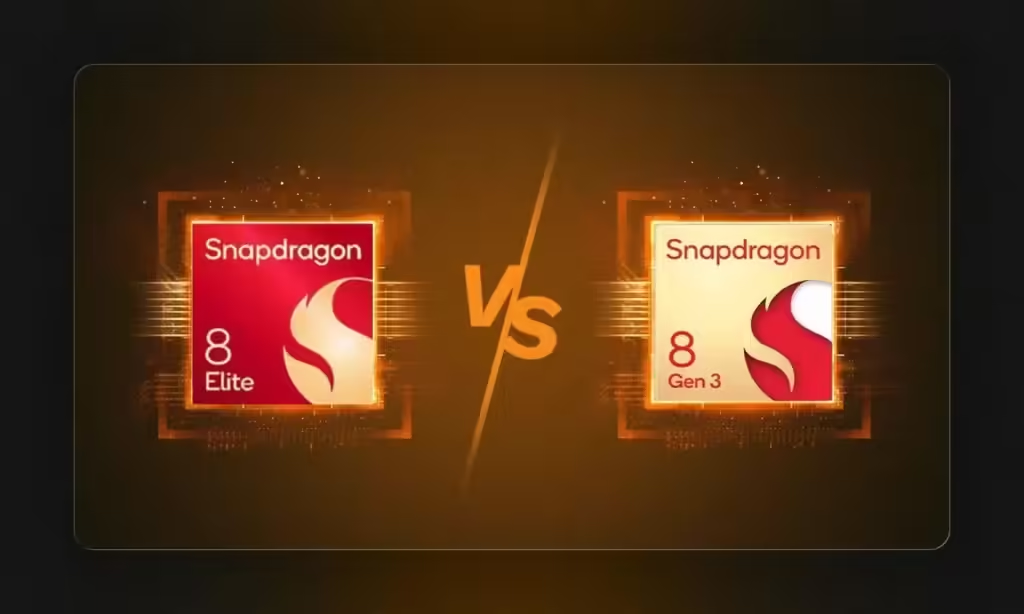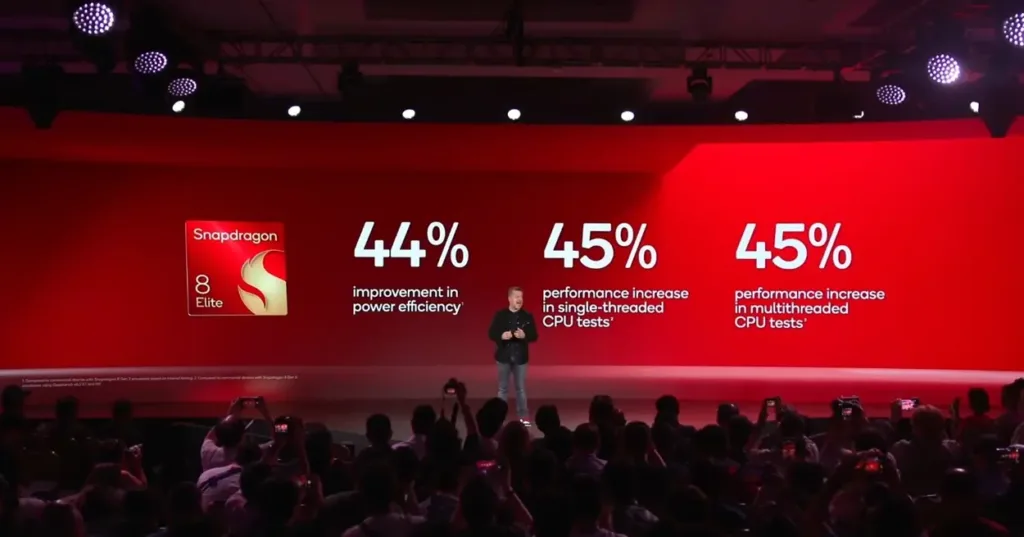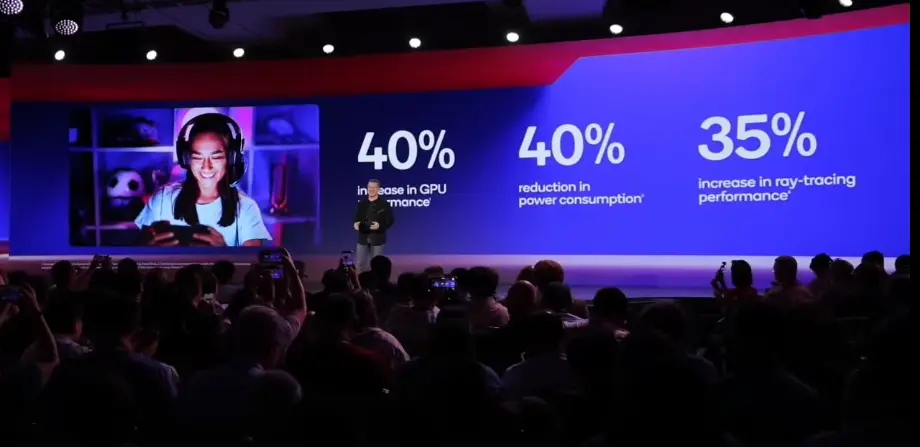
Qualcomm has officially introduced the highly anticipated Snapdragon 8 Elite, also known as the 8 Gen 4 chipset, featuring the second-generation Oryon CPU cores. This new SoC showcases impressive capabilities, positioning itself as a competitor to the leading processors from Apple and MediaTek. But how does it measure up against its predecessor, the Snapdragon 8 Gen 3? To answer that question, we’ve conducted a thorough comparison between the Snapdragon 8 Elite and the Snapdragon 8 Gen 3 using the available data. Let’s dive in.
Snapdragon 8 Elite vs 8 Gen 3: Specifications

Snapdragon 8 Elite vs 8 Gen 3: CPU
Let’s begin with the CPU. The Snapdragon 8 Elite is built on TSMC’s 3nm (N3E) process node, similar to the Apple A18 Pro. This octa-core CPU introduces Qualcomm’s new second-generation Oryon CPU cores for the first time in a mobile chipset, following their debut in the Snapdragon X Elite processors for Windows laptops.
The Snapdragon 8 Elite features a total of eight second-generation Oryon cores. Two of these cores can boost their frequency to an impressive 4.32GHz, surpassing the A18 Pro’s 4.05GHz. These two high-performance cores have exclusive access to 12MB of L2 cache, while the remaining six Oryon cores can reach up to 3.53GHz, utilizing a separate 12MB of L2 cache. This represents the largest cache size available on a smartphone processor.

In contrast, last year’s Snapdragon 8 Gen 3 was manufactured on TSMC’s 4nm (N4P) process node and featured eight Kryo cores. This included a single Cortex-X4 prime core clocked at up to 3.3GHz, three Cortex-A720 cores at 3.2GHz, two Cortex-A720 cores at 3.0GHz, and two Cortex-A520 cores at 2.3GHz.
As you can see, Qualcomm faced challenges in maintaining clock speeds of up to 3.3GHz with the Snapdragon 8 Gen 3. However, with the introduction of the second-generation Oryon cores this year, the company has not only surpassed the 4GHz threshold in passively cooled smartphones but has also achieved an impressive frequency of 4.32GHz for two Oryon cores.
This advancement results in significant improvements in CPU performance. Qualcomm claims that the Oryon-powered CPU in the Snapdragon 8 Elite is 45% more powerful than the Snapdragon 8 Gen 3, in both single-core and multi-core performance.

The Xiaomi 15 and OnePlus 13 are set to launch with the Snapdragon 8 Elite chipset, and their Geekbench scores have already been leaked. In the Geekbench test, the Snapdragon 8 Elite achieved a score of 3,213 in single-core performance and 10,093 in multi-core performance.
These leaked figures indicate that the Snapdragon 8 Elite is approximately 40% faster than the Snapdragon 8 Gen 3 in both single-core and multi-core performance. A performance boost of 40% within just one generation is quite impressive.

Qualcomm also asserts that the Snapdragon 8 Elite’s Oryon CPU delivers a remarkable 44% power savings. If these claims hold true, the Snapdragon 8 Elite could usher in a new era of CPU performance on mobile devices. The Snapdragon 8 Elite is expected to surpass Apple’s A18 Pro in terms of performance per watt.
Snapdragon 8 Elite vs 8 Gen 3: GPU
While the Oryon-powered CPU in the Snapdragon 8 Elite is impressive, the new Adreno 830 GPU is even more powerful. It boasts a 40% performance increase over the Adreno 750 GPU found in the Snapdragon 8 Gen 3. Qualcomm has designed the flagship Adreno 830 GPU using a new Sliced architecture, which features three slices, each clocked at up to 1.1GHz.

The new Adreno 830 GPU also enhances ray-tracing performance for games, delivering 35% better graphics capabilities. Qualcomm has incorporated onboard GMEM (Generalized Memory Management) into the GPU for faster rendering.
Moreo ver, the Adreno 830 GPU on the Snapdragon 8 Elite supports Unreal Engine, Nanite, and Chaos Engine. Despite the increased graphics performance, Qualcomm claims that it consumes 40% less power, which is quite impressive. Overall, the new GPU looks promising, and we’re eager to test it out.
Snapdragon 8 Elite vs 8 Gen 3: NPU
Qualcomm has included a robust Hexagon NPU in the Snapdragon 8 Elite, claiming that this new NPU is 45% faster than last year’s Hexagon AI engine. It includes a 6-core vector accelerator and an 8-core scalar accelerator. When paired with faster dual-channel LPDDR5X memory (up to 5.3GHz), it delivers impressive AI performance.
Qualcomm also states that the new NPU is equipped for Generative AI applications and supports on-device multimodal AI models.
Snapdragon 8 Elite vs 8 Gen 3: ISP
The new ISP in the Snapdragon 8 Elite is 33% faster than its predecessor, capable of capturing up to 4.3 Gigapixels per second. Additionally, the ISP can leverage the Hexagon NPU for various AI features, including limitless real-time segmentation, AI relighting, and object removal from videos, among others.
Snapdragon 8 Elite vs 8 Gen 3: Connectivity
Qualcomm has integrated its latest FastConnect 7900 system into the Snapdragon 8 Elite for enhanced connectivity. This includes AI-enhanced Wi-Fi 7, Bluetooth 6.0 with LE Audio, and Ultra Wideband (UWB) support. The Snapdragon 8 Elite also features the latest Snapdragon X80 5G modem, which includes support for Snapdragon Satellite. This modem utilizes an AI tensor accelerator to enhance coverage, speed, latency, and efficiency.
In comparison, the Snapdragon 8 Gen 3 comes equipped with the FastConnect 7800 system, which offers Wi-Fi 7, Bluetooth 5.4, and LE Audio. It uses the previous-generation Snapdragon X75 5G modem and also employs a dedicated AI tensor accelerator to improve coverage and speed.
Snapdragon 8 Elite vs. 8 Gen 3: Initial Impressions
According to Qualcomm’s presentation, the Snapdragon 8 Elite represents a significant advancement in smartphone performance, boasting over 40% performance gains across nearly every category. The SoC is also reported to be 27% more efficient than last year’s Snapdragon 8 Gen 3.
I find these efficiency figures surprising, especially considering that in my review of the Snapdragon X Elite, the first-gen Oryon-powered CPU consumed a considerable amount of power, even in a laptop with active cooling. However, Qualcomm claims that the second-generation Oryon cores have completely transformed the situation. If these performance and efficiency claims prove accurate in smartphones, Qualcomm is set to redefine the mobile computing landscape.



